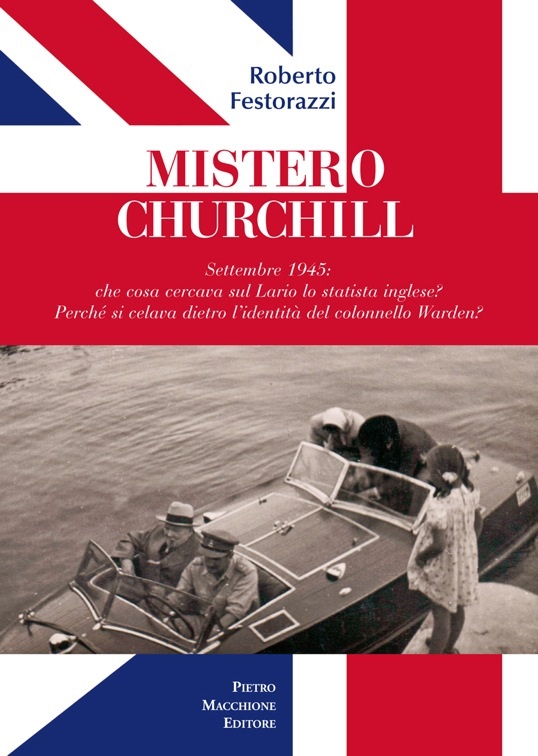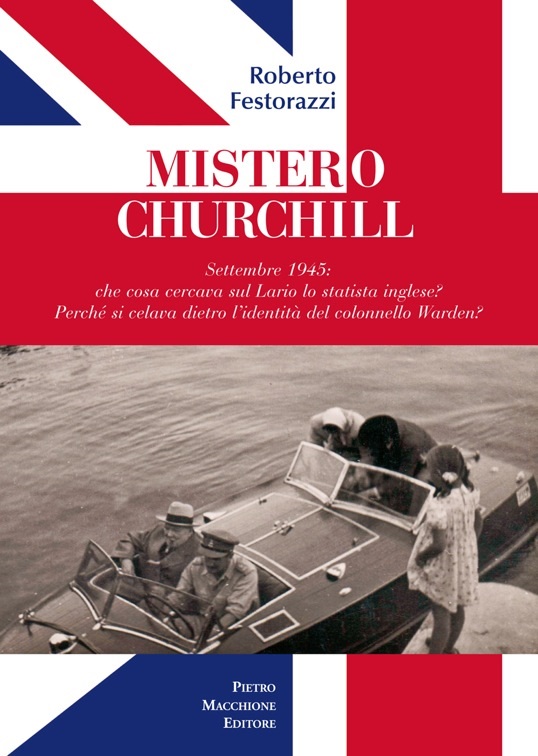
Finest Hour 168
Books, Arts & Curiosities – Mistero Churchill

September 9, 2015
Finest Hour 168, Spring 2015
Page 44
Review By Patricio Romano Giangreco
Roberto Festorazzi, Mistero Churchill. Pietro Macchione Editore, 2013
 In Finest Hour 149 (Winter 2010–11), I reviewed a book, Il Carteggio Churchill-Mussolini, that deals with a supposed exchange of letters between the British Prime Minister and the Duce of Italian Fascism.
In Finest Hour 149 (Winter 2010–11), I reviewed a book, Il Carteggio Churchill-Mussolini, that deals with a supposed exchange of letters between the British Prime Minister and the Duce of Italian Fascism.

2024 International Churchill Conference
In recent yeas this topic has been subject to analyses, or rather rehashes, in various books and newspapers, despite the fact that no one has ever been able to produce anything but photographic reproductions and not the original letters.
My earlier review focused on the details seen in the photographs to show that all of the letters are undoubtedly fakes. That has not stopped Roberto Festorazzi from writing this new book that attempts to show the real reason for Winston Churchill’s visit to Italy in September 1945, soon after the end of the Second World War, was not to have a relaxing painting holiday but to recover his alleged correspondence with Mussolini.
Festorazzi focuses on what bags Mussolini took with him when rescued by the Germans after his fall in 1943 and imprisonment on Gran Sasso. He provides many details in an attempt to prove the existence of the letters, but it is very difficult to believe that Mussolini would still possess any papers or objects of his years in government after his capture and escape.
Since there is nothing further to add about the obviously forged letters, I prefer to focus on the strength of Festorazzi’s book, the detailed account of Churchill’s stay on the shores of Lake Como in the company of his daughter Sarah, his personal physician Lord Moran, and Sawyers his valet.
During this trip Churchill travelled as “Col. Warden,” his wartime travel moniker to hide his real identity. Churchill was the guest of Field Marshal Alexander, who tasked a handpicked group of officers and solders of the Fourth Hussars (Churchill’s old regiment) to assure the security of the Great Man. Alexander proved the perfect host, which Churchill notes in his letters to his wife Clementine, describing the great care that the Field Marshal took of him at the Villa Le Rose during his stay.
Churchill devoted himself to his favorite hobby, painting, and— being particularly inspired by the beautiful lakeside views of Como and Lugano—produced a number of paintings.
Despite the doubtful “truth” of the letters affair, this book is somewhat better than the others dealing with the same issue, since it offers some fresh facts about Churchill’s Italian holiday. Festorazzi has turned up many interesting and amusing details about the recently-defeated Prime Minister’s sojourn through a charming region. The book also offers five hitherto unpublished pictures of Churchill’s daily travels as well as reproducing five of the canvases that Churchill painted during his stay. As yet, however, there is no translation into English.
Patrizio Romano Giangreco lives in Italy. He is grateful to Andrew Martin Garvey of the University of Turin and Italian Officers College for assistance in preparing this review.
Subscribe
WANT MORE?
Get the Churchill Bulletin delivered to your inbox once a month.


